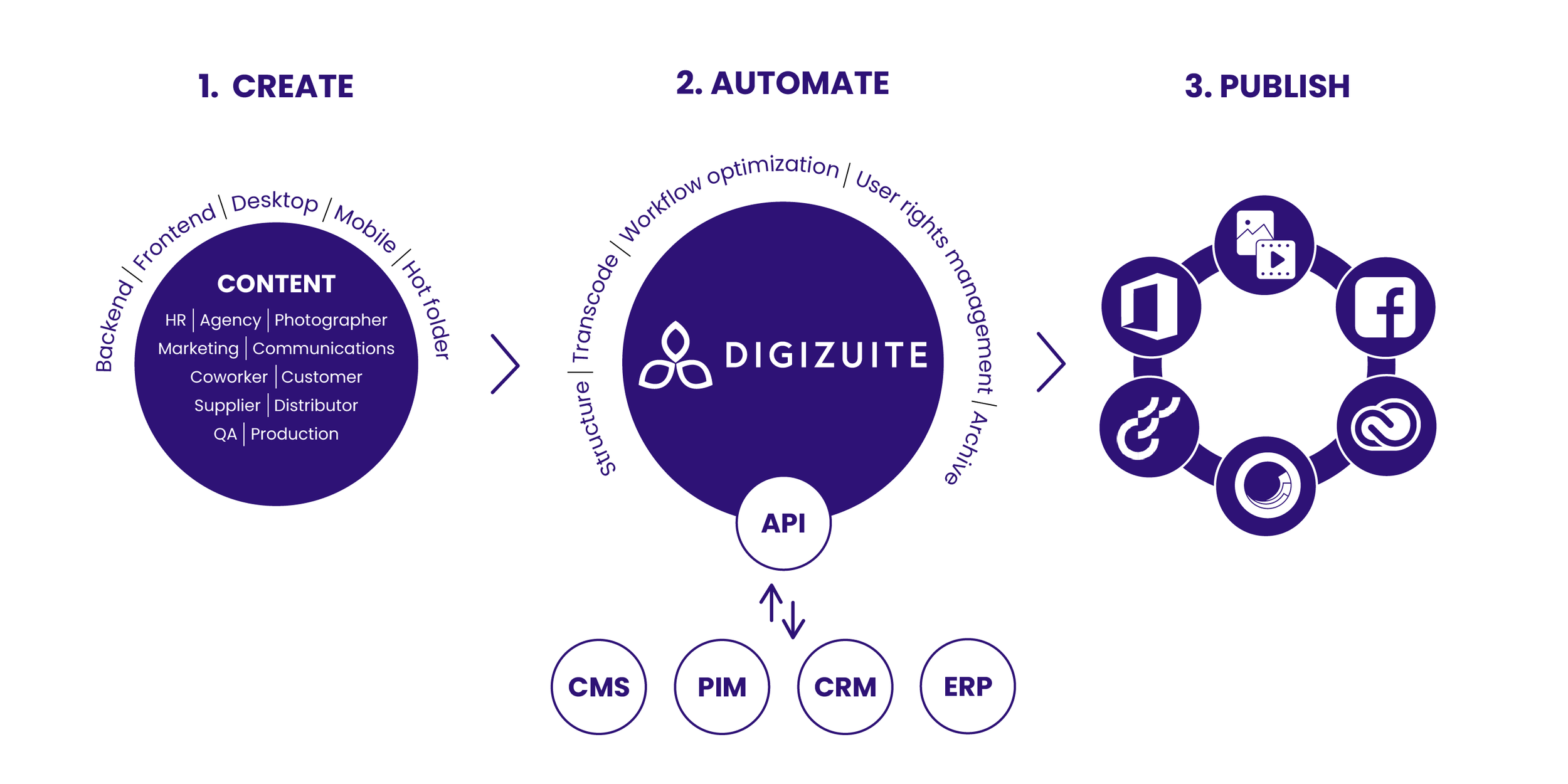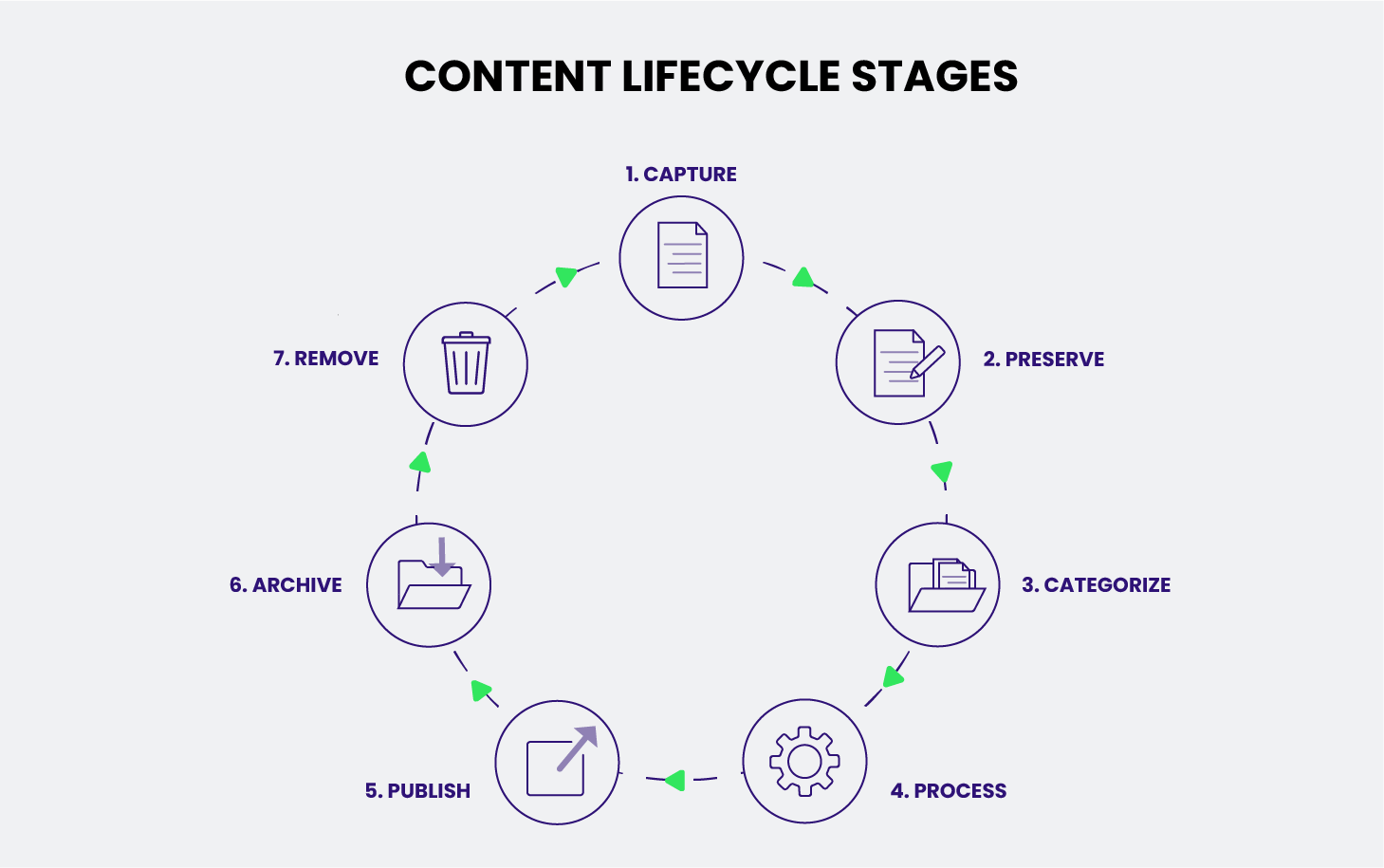7 Powerful Ways 3D Rendering Software and DAM Collaborate
In today's fast digital world, businesses face a twofold challenge:
They need efficient Digital Asset Management (DAM) that covers everything from CAD files to cutting-edge AR/VR content across various departments.
At the same time, 3D visualization has become crucial in the entire product development process, from the initial idea to showcasing on e-commerce sites. In fact, interactive 3D visualization has been proven to increase conversions by 40%.
When these two technology giants collaborate, the results are impressive.
Think about personalized content that suits individual preferences and behaviors, delivered through Virtual Reality (VR) and Augmented Reality (AR).
Because here’s the thing: It's not just about products.
It's about building stronger connections with customers, offering tailored recommendations, and creating captivating content.
In this blog post, we take a look at how 3D rendering software and DAM systems work together - plus a use case that shows how large manufacturers benefit from this synergy.
Table of contents:
What is 3D rendering software?
Biggest benefits of DAM
How 3D rendering software and DAM work together in 7 ways
How manufacturers benefit from 3D rendering software and DAM together
What is 3D rendering software?
If you’re not familiar with 3D rendering software, here’s a quick rundown:
3D rendering software transforms 3D models into lifelike 2D images or animations with realistic lighting, textures, and shadows.
The main purpose? To mimic real-world objects and places.
Widely used in architecture, gaming, films, and product design, this technology was valued at $1.63 billion in 2019, projected to reach $9.61 billion by 2030.
The process itself involves a few main steps:
Generating 3D objects: Create and refine 3D models with certain shapes and details.
Scene setup: Arrange objects, cameras, and lighting in the virtual space.
Applying materials: Enhance surfaces with textures and lighting properties.
Camera placement: Position the virtual camera for the views you want.
Lighting: Set up realistic lighting for the scene.
In essence, it brings your imagination to life. Which in return creates stunning visual representation across different industries.
What is DAM? 5 biggest benefits
Implementing a DAM system to control your content chaos - keeping all your digital assets in one place - offers a range of benefits to your organization.
Here’s the top five benefits of enterprise digital asset management:
1. Faster time-to-market:
Automated processing and distribution save significant amounts of time
Streamlined workflows boost productivity, plus, free up resources for value-creating tasks
2. Improves the customer experience:
Effective management and distribution of dynamic content enhance the buyer journey
Personalized content distribution builds more authenticity and strong customer relationships
3. Supports your digital transformation strategy:
Maintains brand consistency and security in a digitally transforming landscape
4. Breaks down silos and improves collaboration:
DAM integrations ensure everyone has access to the same content versions - across your CMS, PIM etc
User rights control access, fostering collaboration and transparency
5. Creates longer content lifecycles:
DAM allows content repurposing, maximizing content usage and efficiency
Automated distribution ensures content reaches the right channels (at the right time)
How 3D rendering software and DAM work together in 7 ways
DAM and 3D rendering software complement each other seamlessly - with DAM ensuring efficient organization and accessibility of 3D assets. The result? Enhancing the creative workflow and collaboration in 3D rendering projects.
Here’s 7 ways how 3D rendering software and DAM go hand-in-hand:
Asset storage and organization
DAM’s act as a “single source of truth” for all your digital assets.
In the manufacturing industry for example, DAM systems serve as a centralized repository for storing 3D assets, like CAD models. These assets are carefully and strategically organized into folders and tagged with metadata.
That means you quickly get your hands on the right assets based on criteria like project, type, or creator.
Take a company dealing with aerospace components. Thanks to DAM, they can efficiently locate specific 3D models, like turbine blades, in seconds.
All in all: The collaboration between DAM and 3D rendering software helps streamline your day-to-day asset management - freeing up time for more creativity.
Collaboration and version control
Just like DAM systems act as a "single source of truth" for asset storage and organization, they’re also great at creating collaborative workflows and robust version control.
In industries like manufacturing, precision and teamwork are crucial. DAM’s come in playing a crucial role.
Consider a car manufacturer. Design engineers, visual artists, and project managers need to collaborate on creating a 3D model of a new car prototype.
With DAM, all team members can access the same project files at the same time. Engineers can work on the vehicle's technical aspects, artists can add realistic textures and visual elements, and project managers can monitor progress—all in real-time.
Moreover, DAM's version control features keep a careful record of every change made to the 3D model. So if a design modification negatively impacts performance, it's easy to go back to another version.
The result? Ensuring the project stays on track.
Plus, version control makes it easy for all team members to be on the same page when it comes to which specific 3D assets are the right ones to use, increasing brand consistency on all fronts.
Efficient asset approval
DAM systems offer more than asset storage; they also give you an added layer of control and security through approval workflows.
Imagine a marketing team about to launch a new product campaign.
They need to review a 3D visual of the product before it's featured in their marketing materials.
With DAM, they can search and find it efficiently (thanks to automated tagging of metadata).
They can then set up workflows for approval, ensuring that internal (and external) stakeholders give the green light before the asset gets used in 3D rendering projects.
Metadata management
Metadata, like descriptions, copyrights, and creation dates, efficiently guides your asset search in DAM.
Let’s take the car manufacturer example again.
When an engineer needs a specific 3D model for a new car, DAM comes to the rescue.
They can quickly find assets with tags showing things like how the model fits, how to put it all together etc.
Asset distribution
DAM systems offer more than just storage.
They also facilitate a safe & secure sharing of assets, even with external partners.
Consider a furniture manufacturer collaborating with a design studio - where 3D models need to be exchanged.
With DAM, access controls and permissions ensure that only authorized individuals can access and use these assets.
This feature acts like a locked vault, guaranteeing that assets are shared safely and efficiently.
The result?
Boosting collaboration, while at the same time protecting intellectual property in external partnerships.
Archiving and backup
DAM systems provide a safety net against data loss - something that’s crucial in industries like manufacturing.
Think of a car manufacturer, where accurate 3D models are invaluable digital assets.
Not only does DAM store these assets, the platform also helps you improve the content lifecycle through archiving and backup functions.
Imagine this: A critical design change is made, and you realize you need to reference a previous version of a 3D model. DAM's archive feature steps in. It helps you regularly backs up assets, ensuring that past versions can be retrieved when necessary.
Plus, DAM simplifies rights management by allowing admins and managers to set expiry dates and usage rights for files. When a file's expiry date is reached, users are notified to avoid its use or find an alternative.
AKA, helping you maintain a consistent brand experience. Admins can also retire expired assets, removing them from search results.
This ensures the safety and continuity of valuable 3D assets throughout their entire digital lifecycle.
Analytics and reporting
DAM systems provide strong analytics for tracking asset use in projects, like asset popularity, frequency of access, and usage patterns. Which helps you make more data-driven asset management decisions through and through.
Plus, when paired with 3D rendering software, they offer even deeper insights, improving creative workflows and project results.
How manufacturers benefit from 3D rendering software and DAM:
Manufacturers gain big advantages by combining 3D rendering software with DAM systems.
Let's see a use case of how this works:
Use case: Streamlining furniture design and marketing
Imagine a furniture manufacturer that wants a smoother product design and marketing journey.
By leveraging both 3D rendering software and DAM, they achieve this:
Asset creation and organization:
Designers craft 3D models and prototypes using 3D software, saving and sorting them in the DAM system. Assets are then categorized by product type (like chairs or tables) and materials (wood, metal, fabric).
Through our integration, crucial data like dimensions and pricing seamlessly merges into your product information within the Inriver PIM system. This connection links Digizuite's search and browse capabilities with inriver's enrichment tools, simplifying data management. It ensures a unified source for essential product information, boosting efficiency.
Collaboration and approval:
Designers, engineers, and marketers work together via the DAM, modifying assets and proposing design tweaks. DAM's approval workflows ensure designs get the thumbs up before production even begins.
Visualization and marketing:
The marketing department uses 3D rendering to produce stunning visuals of new furniture designs. They pull assets directly from DAM, ensuring they're using approved and most updated versions.
Efficient asset sharing:
High-quality 3D models and renderings grace marketing materials, from brochures to websites. DAM streamlines asset distribution to agencies, e-commerce sites, and retailers.
Version control and error reduction:
DAM keeps track of asset versions, simplifying reference or reintegration when changes happen. Using up-to-date assets across the board helps you avoid errors, reducing design rework and manufacturing hiccups along the way.
Content analytics and making smart decisions:
DAM's content analytics tools help track product performance in marketing campaigns. This data drives decisions on prioritizing products and refining marketing strategies as you go.
Integrating 3D rendering and DAM transforms the furniture maker's design, visualization, and marketing process.
How? By enhancing collaboration, minimizing errors, accelerating product launches, and guiding data-driven decisions for an overall streamlined and efficient operation.
Conclusion
Summing up, combining DAM and 3D rendering software simplifies and improves visual content creation for a wide range of industries - but especially the manufacturing sector:
DAM ensures easy access and organization of crucial assets, while 3D rendering software breathes life into product designs.
The result is enhanced communication, streamlined workflows, and ultimately, contributing to better products and marketing materials.
Ready to learn more about how your organization can benefit from Digizuite DAM handling all your assets, both 2D and 3D?
Book a demo with us and get in touch.






